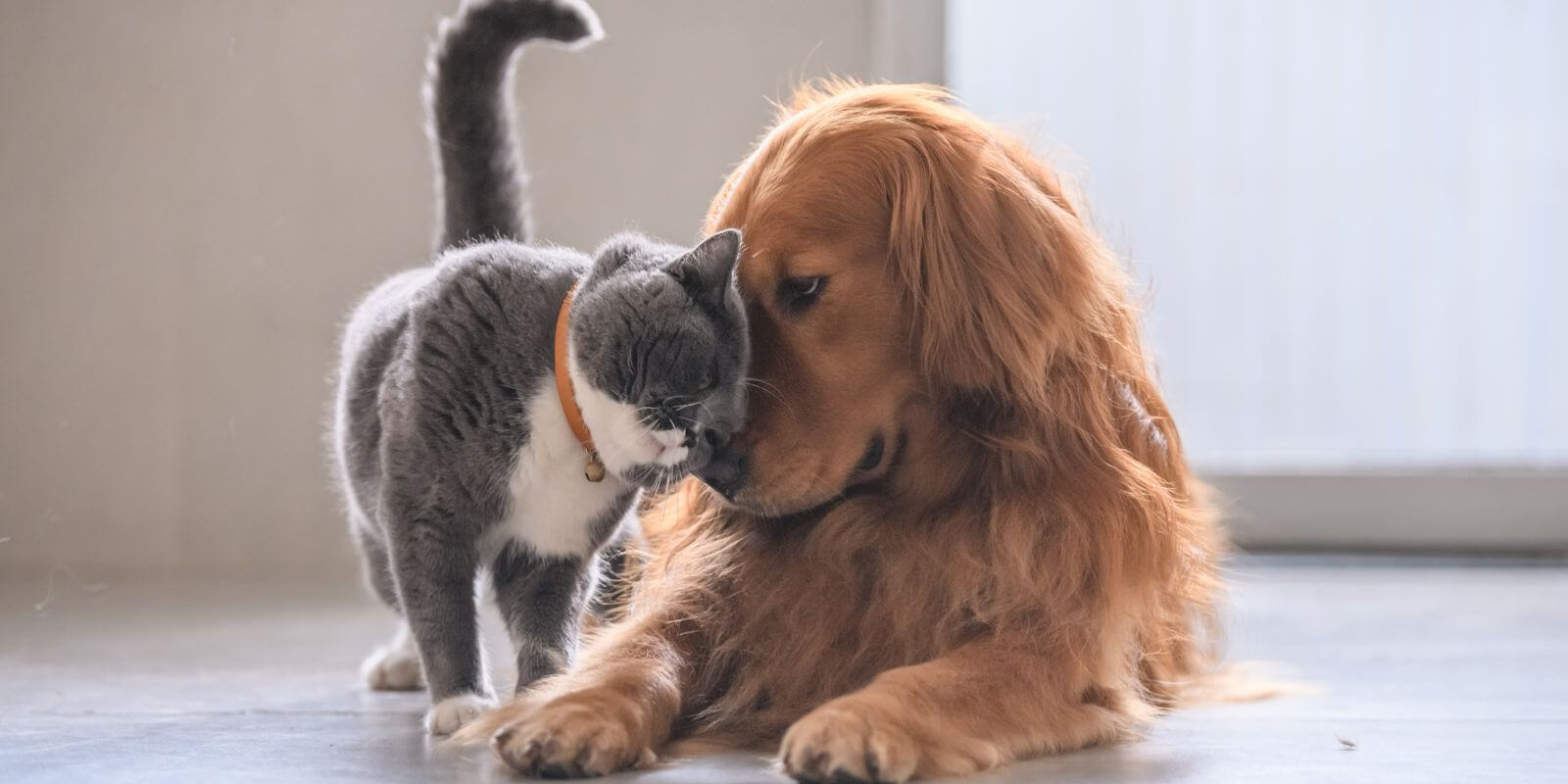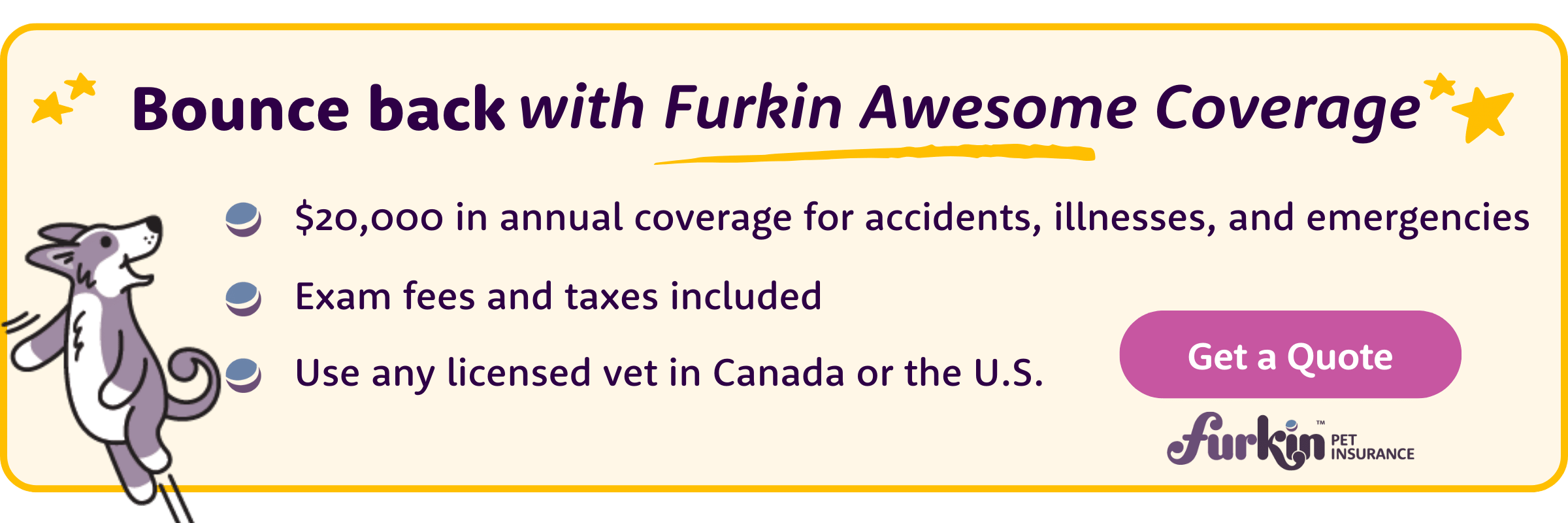You’re getting ready to bring home your furry companion and you are excited for all the adventures you’ll have together! You’ve heard of this thing called “pet insurance” so you start shopping around and getting quotes because you want your pet to be protected should the unexpected occur. But how are those premiums for your precious dog or cat determined? And how do you know the prices are fair?
The value of pet insurance, similar to other insurance types, is to provide financial protection and peace of mind should your furry friend experience a costly unexpected illness or injury. Pet insurance companies operate similarly to other types of insurance like home or auto - they use data to calculate expected losses based on a variety of risk factors.
We’ve put together a list of factors that impact pet insurance premium prices to help you better understand how pet insurance premiums work.
Table of Contents
- What factors influence the cost of pet insurance?
- How do all these factors come together?
- What is the average cost of pet insurance in North America?
- Why choose Furkin Pet Insurance?
What factors influence the cost of pet insurance?
Pet age
If you’ve had a pet before, you may have noticed that as your pet's age increased, so did the new illnesses or ailments. Generally speaking, the data shows that as pets get older the expected cost to cover medical expenses from accidents and illnesses increases. This is because the probability of dogs and cats experiencing medical problems increases as they increase in age.
Species
Dogs and cats differ in average size and common illnesses, so species is typically used as a rating factor when determining pet insurance premiums. The size of a pet being insured also has an impact on costs since larger animals are more costly to care for on average compared to smaller animals. For a simple example, the amount of anesthesia needed is based on pet size, so larger pets will experience higher costs even for a similar surgery solely due to their size. Since most cats are smaller than dogs, they will usually be a bit less expensive to insure.
Breed
Oftentimes when you research bringing a furry companion into your life, you'll be looking at the temperament of the breed to make sure they will fit your family and lifestyle. But have you looked into what health conditions your pet might be predisposed to?
A pet’s breed has two main factors that influence pet insurance premiums:
- A pet’s breed is a good indication of the size of a pet and similarly to the impact mentioned above for species, larger animals tend to incur higher average costs of medical care.
- Certain breeds may be more or less prone to hereditary or congenital conditions. If a pet insurer covers medical care for these conditions, then a pet’s breed will impact the cost of premiums.
Geographic region
The geographic area where your pet lives can also impact premium costs. This is because pet insurance premiums are partially determined based on the utilization and average costs of veterinary care across North America. This includes veterinary inflation (such as innovations to equipment, medication, etc.) to help pets like yours live their best and longest life as your furry companion. For example, in home or auto insurance, based on factors unique to your geographic region, your premiums may be higher or lower than your friends in another region. The same can be true in pet insurance.
Some examples of utilization and average cost of care that is influenced by the region you live:
- The frequency of pet allergies.
- The average cost for cruciate ligament surgery.
- The access to advancements in veterinary technology and medical devices.
Co-insurance
When you go to the dentist’s office, you may sometimes have a “co-pay” for that visit. Similarly in pet insurance care, co-insurance is the percentage of costs a member is responsible for paying on eligible veterinary services. For example, with Furkin’s 80% reimbursement plan, a member would be responsible for the remaining 20% associated with the treatment of an eligible condition. This 20% is referred to as coinsurance. Reimbursement levels and coinsurance are another factor that influences insurance premiums.
Golden Rule of Co-Insurance Level: The higher your reimbursement level (and therefore lower your co-insurance responsibility) the higher your premium will be because your insurance company will be paying for a larger percentage of covered claims.
Deductible
An insurance deductible is the amount of money you pay out of pocket before your insurance company begins to cover eligible claims. Deductibles are typically annual, meaning you only need to cover your deductible once per 12-month policy year.
Note: We get a lot of questions about how deductibles work. Your deductible is not paid to the insurance company. The deductible is simply the amount of expenses you need to pay for out of pocket before your insurance coverage kicks in. The only amount paid to the insurance company is your monthly premium.
Golden Rule of Deductibles: The higher a deductible you choose, the lower your monthly premium will be since you are choosing to pay more out of pocket before your insurance coverage kicks in.
Furkin Pet Insurance, for example, offers multiple deductible options to choose from so you can tailor a plan to fit your personal and financial needs.
When calculating how much you will receive back from your pet insurance provider you need to deduct both the co-insurance and deductible amounts. In some cases, pet insurance providers apply the co-insurance first and then the deductible, whereas other providers will apply the deductible first and then the co-insurance, so be sure to understand what your provider does.
Coverage limits
Your annual coverage limit, or policy limit, is the maximum amount of money the insurance company will reimburse you for claims (after coinsurance and deductible) in a given policy year. Some insurance policies offer multiple options for annual coverage limits – such as $10,000, $20,000, or unlimited.
As with deductibles and coinsurance, the annual coverage limit your plan has will influence the cost of premiums. The higher your annual coverage limit, the more money your insurance company may have to reimburse you for in a given year, therefore, the higher your monthly premium.
How do all these factors come together?
The goal of pet insurance, similar to any other type of insurance, is to help protect members from the unexpected. Furkin Pet Insurance, in particular, understands that your dog and cat are more than just pets – they’re family.
It can be difficult for people to save for some of the events that pet insurance helps to cover, like costly accidents or illnesses. We believe pet insurance is important so that pet owners never have to face the difficult question of if they have enough money to treat their pets should they become ill or injured.
When you buy pet insurance, you are transferring that unknown "risk" of an unexpected costly accident or illness from yourself to the insurance company. This ownership of “risk” by the pet insurance policy is where your premiums come into play and how the factors outlined above come together.
Finally, it is likely that with most if not all pet insurance providers you will see your annual premium increase most years. There are two contributing reasons for this, the first is age. As your pet ages, the likelihood of needing medical care also increases. Secondly, veterinary costs historically increase every year, some of it due to inflation and others due to advances in veterinary medicine, i.e. new equipment, new drugs etc. While no one likes to see costs increase, the important thing to note is that your pet insurance policy will continue to provide peace of mind year after year. And while your premiums may increase so will the cost of veterinary care, making treating your pet’s illness or injury expensive without the protection of pet insurance.
Hopefully, this article gives you a better understanding of what goes into your furry companion’s pet insurance premium quote or pricing, and how adjusting your coverage options – if available with your pet insurance provider – such as deductible, coinsurance, and annual limit can lower (or raise) your premiums. Learn more about how Furkin Pet Insurance helps keep premiums lower throughout the life our pets are insured.
What is the average cost of pet insurance in North America?Now you have an understanding of the factors used to calculate pet insurance premiums, but what are the average costs for pet parents in Canada and the United States?
According to research done by the North American Pet Health Insurance Association, the average cost of insuring a dog is about C$69 in Canada and $49 in the US. For cats, the average cost is about C$36 in Canada and $29 in the US. When adjusting for currency differences, the average costs are quite similar in Canada and the US.
Remember, the numbers above are averages and will vary greatly depending on the rating factors mentioned above. For example, young puppies of a small breed will usually cost less than these averages, while older large breed dogs will usually cost more.
Why choose Furkin Pet Insurance?
Pet insurance, like other lines of insurance, typically have many similarities in coverage across different companies. Standard pet insurance includes coverage for unexpected accidents, illnesses, and emergencies. So why choose Furkin?
With Furkin, you get your standard pet insurance plus much more. Our coverage includes more than $4,000 in additional coverage that doesn’t apply to your annual limit. Some of these added perks include up to $1,000 for advertising & reward if your pet is lost or stolen and up to $1,000 for boarding fees if you become hospitalized for more than 48 hours and need your pet to be boarded. You can also get access to 24/7 telehealth* coverage, a Petriage* online subscription, coverage for alternative and behavioural therapies, and many more benefits that you can learn about in our Sample Policy.
Click here to get a quote in seconds. We also think we have the best care team in Canada and would love to take your call and answer any questions you may have. Give us a shout by phone at 888-453-1088, Monday through Friday, 6am-6pm PT.
*Telehealth Support is offered through Vetsdirect Limited and Petriage is offered through Petriage Inc




